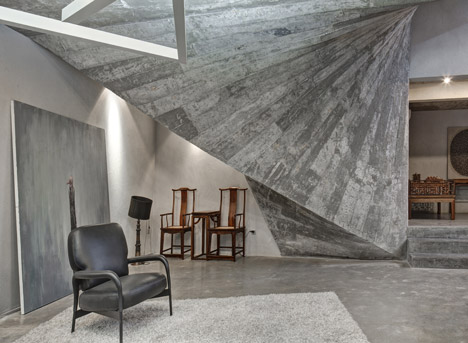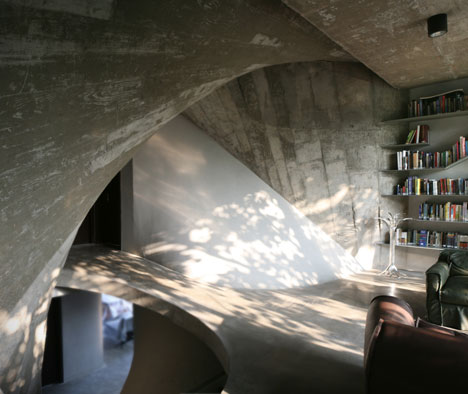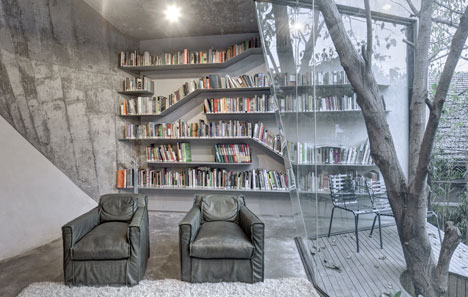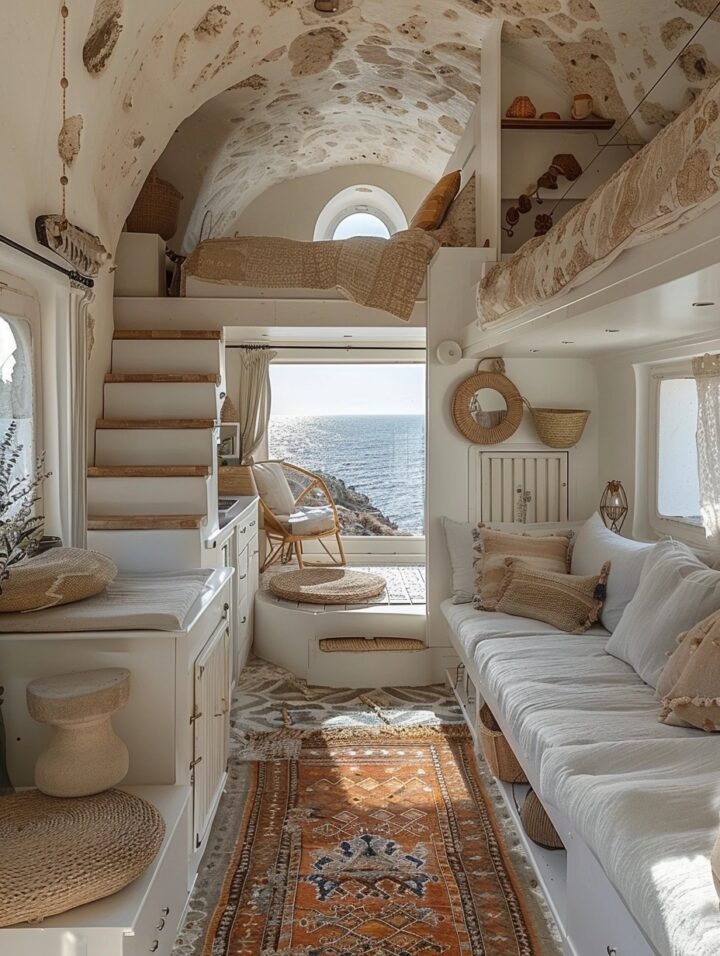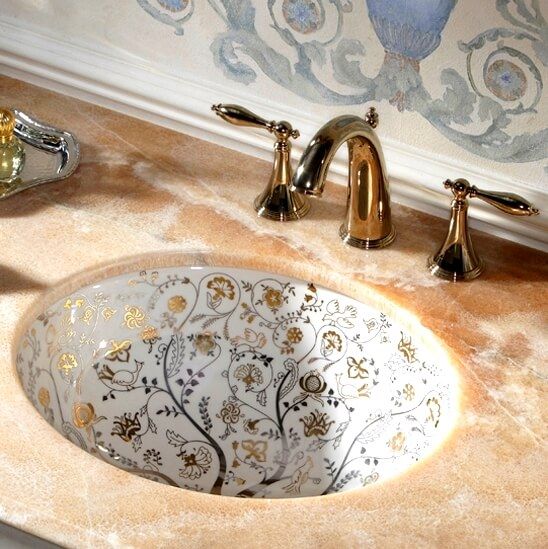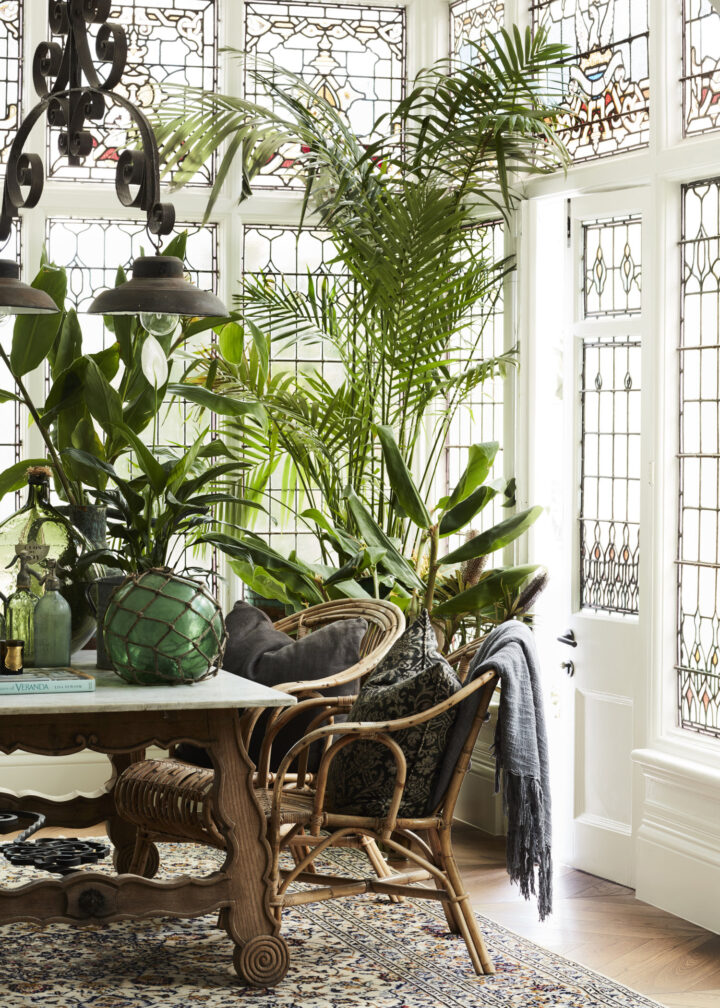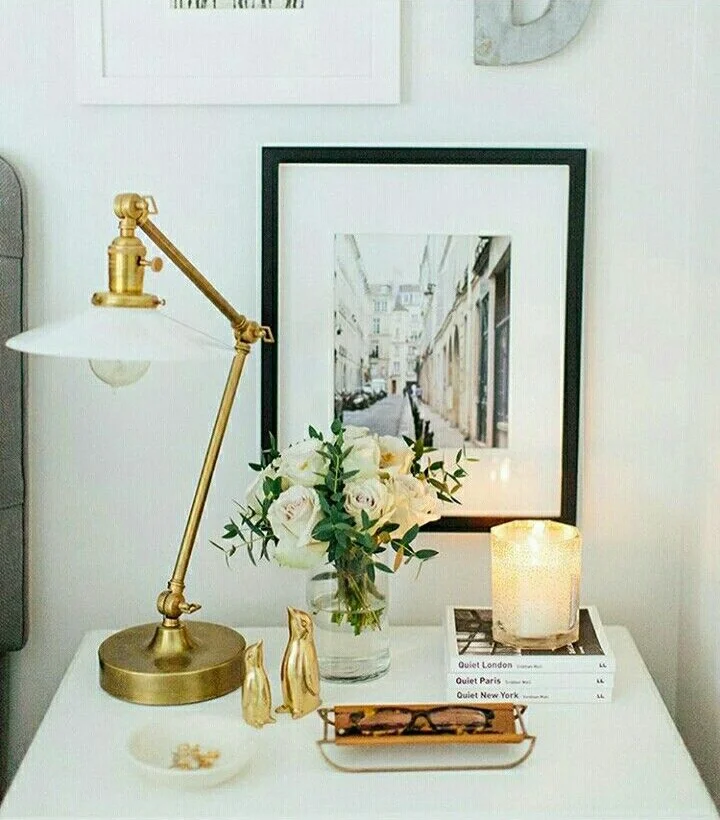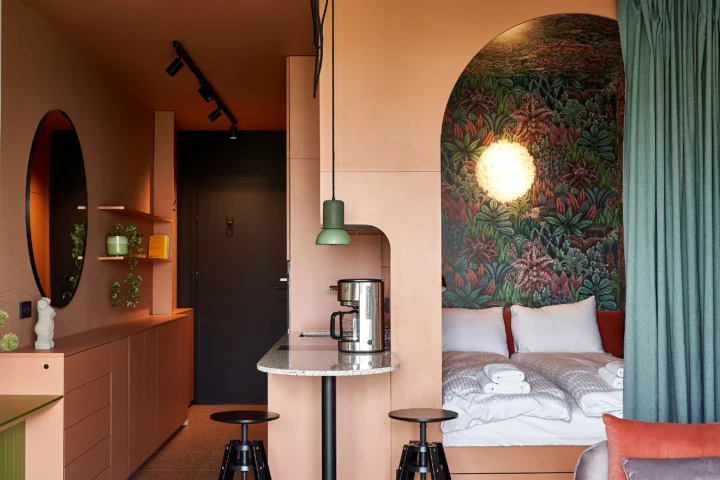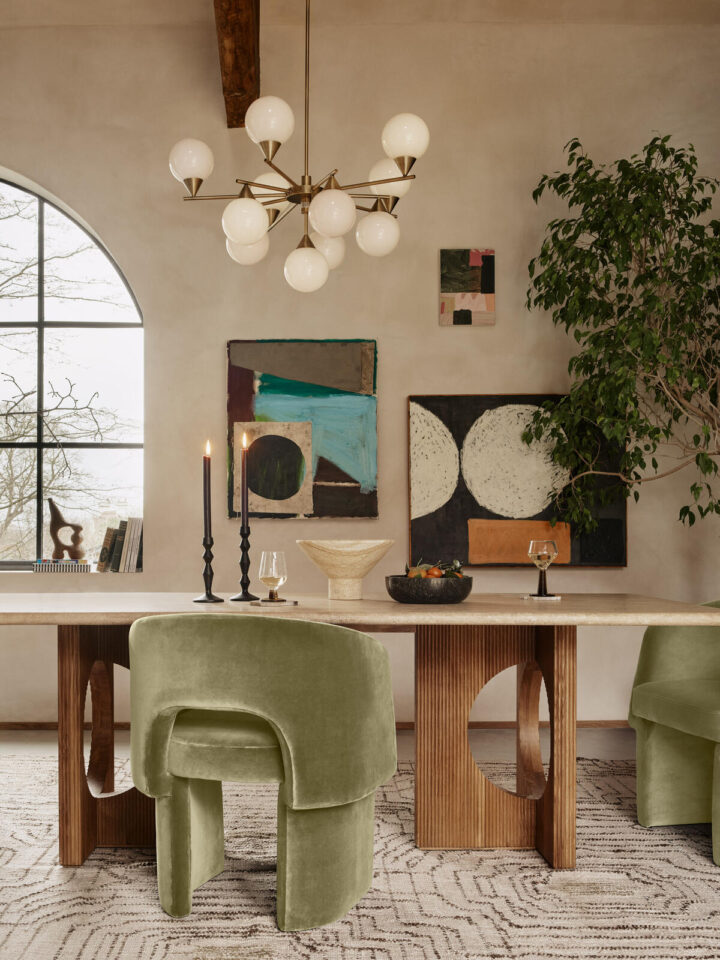Concrete walls twist up through the interior of this tea house and library that Shanghai architects Archi-Union have constructed in the backyard of their studio.
The Tea House, located in the backyard of Archi-Union’s J-office, is constructed from the salvaged parts of the original warehouse’s collapsed roof. The site was extremely constricted with walls on three sides, and with only one side facing towards an open space that contains a pool. The space was further restricted by a mature tree. The design tries to embody harmony by integrating enclosure and openness, delightful space and logical construction and other complicated relations. This building reacts to the site’s environment; the plan layout is a logically obscure quadrilateral, thus maximizing the amount of space. It is divided into three parts. A covered public area is formed towards the open space with the pool, with an enclosed tea house at ground level and library on the first floor where a small triangular balcony extends around the existing tree. Other more private spaces exist such as a lounge, reading room and service room which are arranged towards the rear of the building; a delightful transitional space was created to connect the public space and the private spaces.
The transitional space was designed around a twisted nonlinear hexahedron staircase, which connects the functional spaces. The stair resolves the vertical transportation issue from the tea house and the library and provides an inner courtyard near the reading room for viewing the existing tree. The space was designed to bring a new experience to an ordinary functional space. Linear space suddenly changes into an expressive form, surging from the tea house then transforming into a tranquil space for the library on the floor above, making the reading room a special place to sit.
The volume is a three-dimensional irregular shape which is impossible to be understood through plans. The twisting shape was designed by scripting in Grasshopper an algorithmic plug-in for Rhino. However such a shape is difficult to translate into quantifiable information for guiding construction. The constraints of manual construction obliged us to invent solutions at the time of construction to realize the advanced digital design with local low-tech construction techniques. Firstly we abstracted the structural skeleton which was subsequently scanned with digital software. This curved shape was then recalculated through interlacing straight lines; these lines were then formed into ruled surfaces filling the void. The spacing was set to the dimension of timber, thus the digital ‘setting out’ could be easily translated into a manually constructible shape.
Location: No. 1436 Jungong Road, Yangpu District, Shanghai
Area: approx 300 sqm
Design: March, 2010 – August, 2010
Construction: August, 2010 – May, 2011
Architect: Archi-Union Architects
Chief Designer: Philip F. Yuan
Design Team: Alex Han, Fuzi He
Photographs by Zhonghai Shen
Via Dezeen


